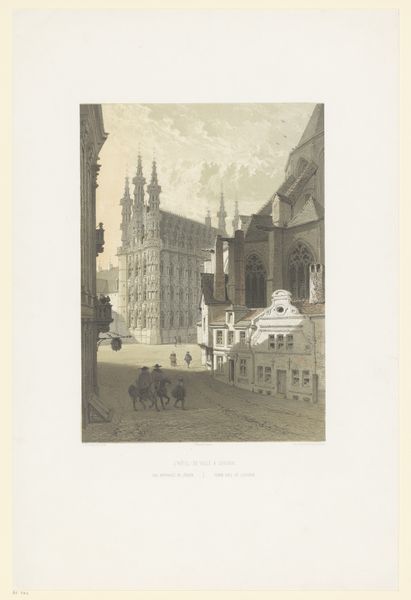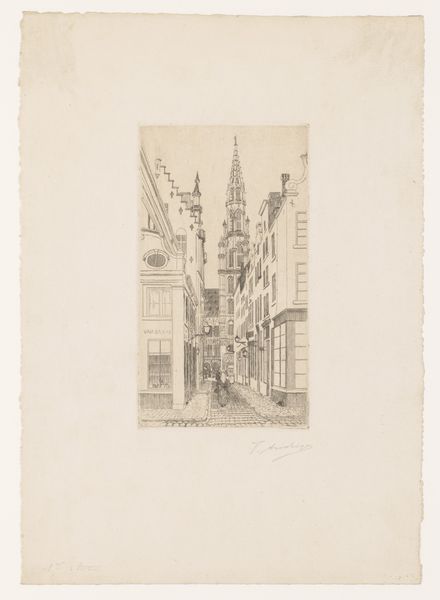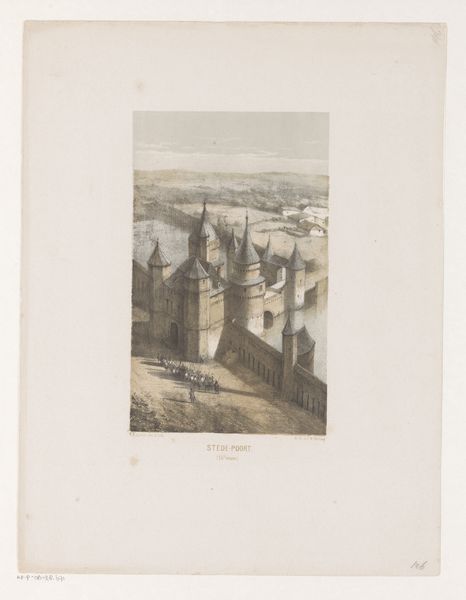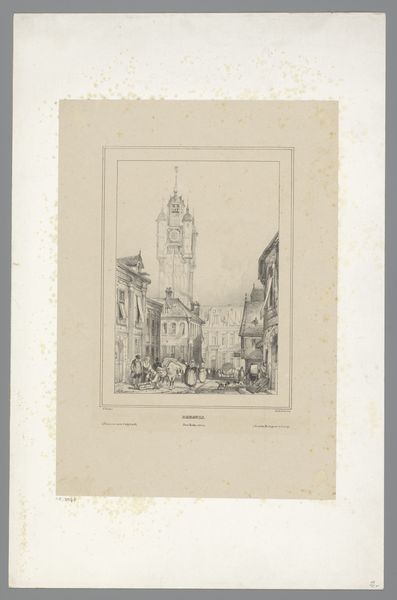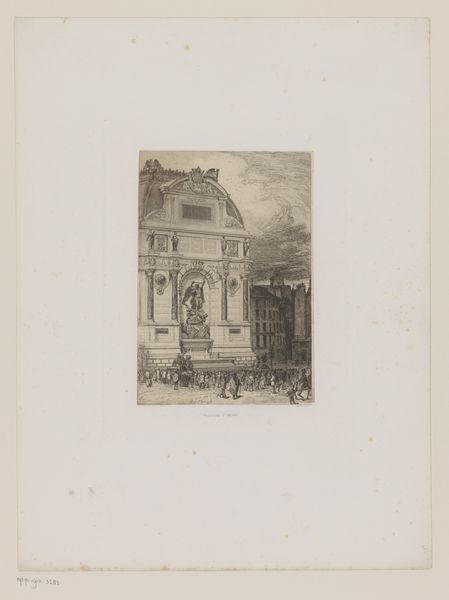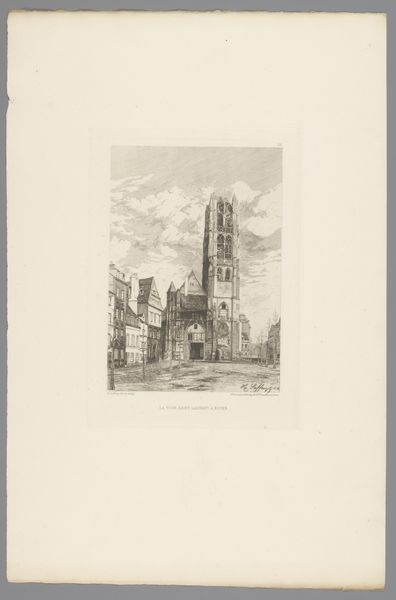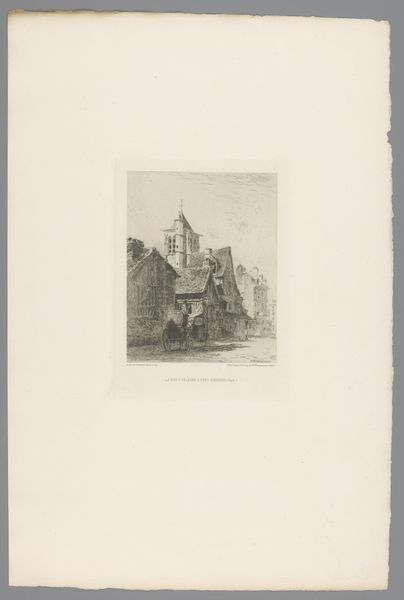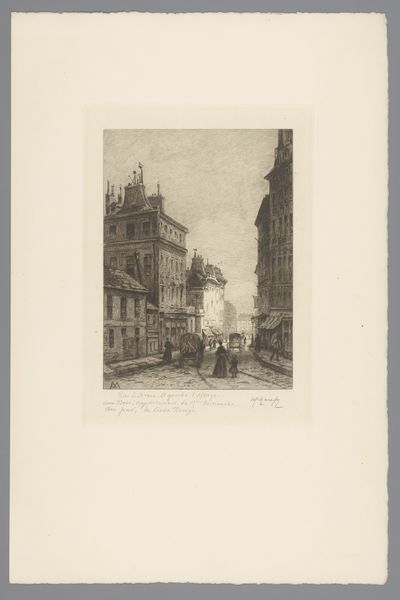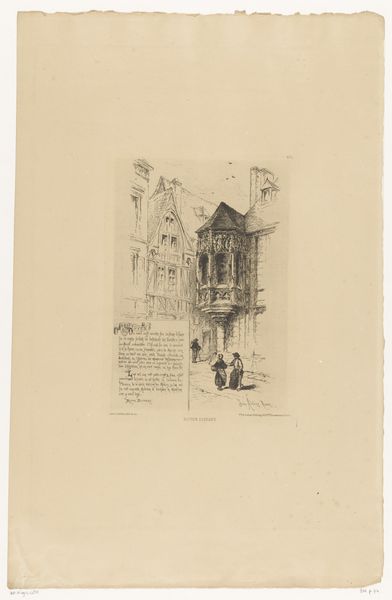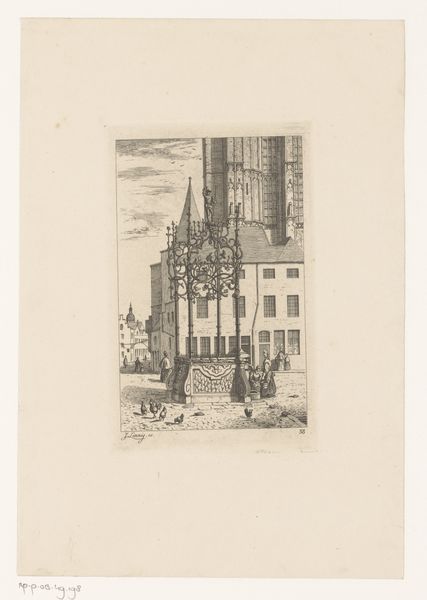
print, etching
# print
#
etching
#
landscape
#
geometric
#
cityscape
#
realism
Dimensions: height 180 mm, width 119 mm
Copyright: Rijks Museum: Open Domain
Editor: This etching, titled "Gezicht op de Giralda te Sevilla," by Alfred Alexandre Delauney, dates back to 1878. I'm immediately struck by its sense of quiet grandeur, this intricate architectural structure dominating the scene, and wonder about the artist's decision to portray the tower as the city’s defining monument. What stands out to you when you look at this piece? Curator: What interests me is the portrayal of Sevilla at this time, framed by the artist and his audience. Realism in art emerged as a democratic movement. Instead of only portraits of nobles and religious scenes, art became about the everyday citizen and common landscape. With "Gezicht op de Giralda te Sevilla" (View of the Giralda in Seville), Delauney democratizes our view. It represents the public sphere - figures stroll, the building is used. This becomes a slice of public life. How might its impact on 19th century European viewers change the way they travel or think about the world? Editor: That's interesting. I hadn't considered the rise of the 'everyday' in art as a function of increasing democratization and tourism in Europe, using art for promotion! I mean, even today, we photograph famous landmarks as a symbol of experiencing somewhere new and special. Curator: Precisely. And consider who could afford to travel, and who determined what was worthy of being captured and circulated. Do you think it perpetuates a romantic vision of other cultures? Or, does this print offer more accurate insights to life in the city of Sevilla at this time? Editor: It definitely provides a window into 19th-century perceptions and representations, if not a totally objective reflection of the city itself. I appreciate seeing it in the context of art's broadening social role. Curator: Indeed, this piece illuminates the power of art to shape public perception. This etching contributes to the ongoing story of a city. The print also influences how we think about cities more broadly: then, and now.
Comments
No comments
Be the first to comment and join the conversation on the ultimate creative platform.
